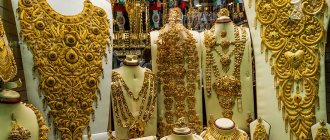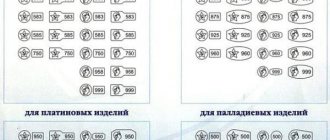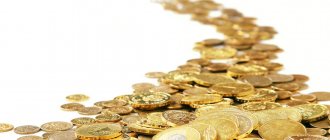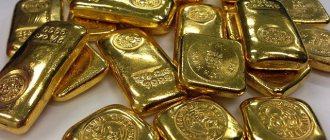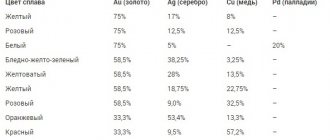After a strong rise in gold prices in 2018-2020, from a level of approximately $1,200 to a level of almost $2,100 per troy ounce, the price took a pause for 13 months for correction and consolidation in a wide range of $2,070-1,670 per ounce.
We believe that this consolidation is coming to an end and will soon be replaced by a new wave of growth, which will lead to the price consolidating above the $2,000 mark
, and subsequent testing at levels of approximately $2,500 dollars per ounce.
Such “round numbers” have psychological significance for market players and, as a rule, are “magnets” for taking profits / opening new positions.
What could serve as a catalyst for such an increase in the price of gold?
A combination of factors.
Declining trust in public institutions and states
Gold is a political asset: it is bought not because of a good life, but in order to insure against political risks. The less confidence in the future and the stability of the financial and political system, the stronger the demand for gold as a conservative hoarding asset that allows minimizing the risks of expropriation, devaluation and depreciation of capital.
The campaign to force the introduction of “vaccine passports”/quar codes caused negative public outcry and protests in many countries, which became one of the factors in the growing distrust of part of the population in the media and government institutions.
This is explained by the fact that existing vaccines against COVID-19 do not
prevent infection of vaccinated people, and therefore, the status of “vaccinated / not vaccinated”
in any way
affect whether a person can be a potential carrier of the virus, i.e., pose a “potential danger” to others.
The argument “vaccinated people are less likely to catch the virus and get sick more easily” is not valid to justify compulsory vaccination: how “severely” or “easily” you get sick is your own business, not concerning the state and society. The only thing that matters to society is whether you pose a “danger” to others.
If you do exercises every morning and maintain good immunity, this can also contribute to a “mild” or even “asymptomatic” course of the disease. But we do not see that those who are not
does exercises in the morning - because this is everyone’s personal business.
The large-scale use of coercive measures in the absence of adequate logical grounds gives rise to conspiracy theories and mistrust of the state and public institutions, including the media.
Meanwhile, the world of finance is entirely built on trust, and the word credit itself (Latin credito) means “trust.”
Money is a collective illusion, also based on trust. You trust that these colored cut-out pieces of paper are worth something, and you are ready to exchange your labor and your property for them.
But as soon as trust in the state/social institutions decreases, people begin to avoid money and prefer to keep their capital in assets - be it physical assets (real estate, precious metals) or financial ones (stocks and securities).
This boosts asset prices - something we see firsthand in a wide range of markets - from real estate to stocks.
Inflation
The world has entered a period of stagflation - this is when the economy stagnates or even contracts, but prices rise uncontrollably. In such a situation, holding capital in cash, on deposits or current accounts, or even in the form of banknotes “in a mattress / stocking” means losing capital due to the depreciation of money.
Depreciation occurs unevenly: over a given period of time, the prices of certain things accelerate, then the virtual “relay race” passes to other categories of goods/services.
Currently, there has been strong growth in various categories of commodities (from energy to food and building materials), while prices of gold and other precious metals have stagnated.
Sooner or later (and sooner rather than later), the “baton” will again pass to the already quite “undervalued” and “lagging” precious metals.
Market sentiment and technical factors
Gold is highly oversold both in terms of market sentiment and in terms of technical indicators on the chart - such as moving averages (for example, the 200-day average) or stochastics.
The situation on the gold chart resembles a “compressed spring”, ready to begin to open up at any moment. The signal for this will be the price consolidating above the level of $1.835 dollars per troy ounce.
Uncontrolled emissions
Since the model of the modern “welfare state”, most clearly implemented in Europe, is currently bankrupt, states are forced to finance their needs (and budget deficits) virtually from the “printing press”, forcing them to constantly increase the issue of money. This also does not add confidence to the financial system, and encourages market players to look for hoarding tools that reduce the risk of capital impairment.
Oil
FBA "Economy Today" /
At the end of this week, a rather optimistic picture emerged on the oil market: yesterday, fuel prices managed to rise to $75.5 per barrel, and during today’s trading, the figure completely shifted to $77.6, thus reaching annual highs.
“Positivity [for commodities] continues to increase due to US oil shortages due to Hurricane Ida. There continue to be interruptions in production, which has not been fully restored in the Gulf of Mexico, and the United States has to buy additional oil from Iraq, Canada and Latin America to ensure the required volume at processing plants, analysts say. — At the same time, the Chinese authorities, due to disrupted oil supplies, are now buying more oil from Russia and the Middle East. Refinery utilization in America increased to 93% - this is the highest value since May 2021, which indicates a fairly high demand for raw materials.”
One hurricane is over - it's time for another. A new tropical storm Sam, formed in the Atlantic, risks strengthening to category three and reaching the US coast by the weekend. This, of course, strains participants in the commodity market, because in this case the force of nature will cause further damage to the country’s oil infrastructure.
“But for now, the main limiting factor, which could put quite serious pressure on the oil market in the near future, remains the situation with coronavirus. In general, it has faded into the background, but local outbreaks are emerging again around the world, just as the number of new cases is growing in Russia. The biggest fear is that new outbreaks will appear in China as the government reacts harshly to prevent the spread of infection,” economists conclude.
Against this background, black gold remains at fairly high levels: the price range from 75 to 80 dollars per barrel of Brent remains relevant for it.
Investment gold market in Russia
currently no shortage
on the investment metal market: Central Bank issues gold investment coins “St. George the Victorious” of all variations and denominations: 50 rubles (7.78 grams of gold), 100 rubles (15.55 grams of gold), 200 rubles (31.10 grams of gold) , and 25 rubles (3.11 grams of gold).
Currently, the prices of gold coins of St. George the Victorious in the most common denomination (50 rubles) fluctuate among private dealers in the range from 36,000 to 38,000 rubles - depending on the year of minting, the mint, and the condition of the coins - which constitutes a spread of “exchange premiums” ( premium price of gold in coins to the exchange value of gold) from 9 to 15%. By Russian standards, this is very little; there were worse times, when coins were traded at a premium to the exchange of 20-25%, due to the shortage. Follow the news and quotes!
Authors: Gold Reserve, analytics department September 15, 2021
“You need to buy gold regularly”: the economist gave advice
There are many reasons why our private investment demand for physical gold is several times lower than abroad. “Saw, Shura, saw, they’re golden!” — in general, the situation fits into this metaphysical thesis, timeless for Russia. Let's say, in practice, a person purchasing 1 gram of precious metal from a state bank for 4.5 thousand rubles does so at a loss. A huge spread awaits him - the difference between the purchase and sale prices, reaching 41% for bars weighing up to 5 grams, and 32% for products weighing 1 kilogram. And this is just one technical touch to the overall picture.
Asset of last resort
The yellow metal cannot be put on a par with other types of raw materials, since prices for it are formed according to their own specific patterns. Time after time, inexplicable, at first glance, things happen in this market, when gold either rises sharply in price or drops to its minimum in 5–10 years. So, in March 2010, there was an anti-record - a little over $1 thousand per ounce. A decade later, the cost of October futures on the New York Comex exchange exceeded $2 thousand. Since the beginning of 2020, prices have increased by 33%, and they have experienced truly explosive growth demonstrated since the second half of July against the backdrop of a depreciation of the dollar. The trigger was the coronavirus crisis. In opposition to it, the world's leading central banks are literally flooding stock and debt markets with liquidity. In the spring, they spent over $5 trillion, of which $3 trillion came from the US Federal Reserve, the rest from the Bank of England, the ECB and the Bank of Japan. This heightened investors' fears of hypothetical dollar inflation, and they remembered gold as the "asset of last resort."
Today, the monetary policy of regulators largely depends on the will of their governments. Central banks are forced to run the printing press and throw new portions of unbacked currency onto the markets in the name of combating the financial consequences of the pandemic, says Alexey Vyazovsky, vice president of the Golden Coin House. According to the expert, it’s like putting out a fire with gasoline. As a result, the dollar supply (in particular, the Fed balance sheet) is really growing, and people, in turn, are becoming increasingly aware: if paper money can be so easily stamped in any quantity, then it is worthless.
This won’t work with yellow metal, you can’t print it, its physical reserves are finite. All the easily mined gold (alluvial in rivers) has long been mined; there is only one thing left to do - to dig complex, expensive mines. Accordingly, its own internal value is unconditional and does not depend on external circumstances. People who are more or less knowledgeable buy it to avoid the risks of the entire paper financial system, including banks. And today gold not only has not lost its function as a protective asset, but has increased it. For Russians, this point is especially relevant, since the domestic currency has weakened against the dollar, which, combined with the rise in price of gold on foreign markets, has led to an increase in its price in ruble equivalent by 60% since the beginning of the year per gram of 999 fineness.
Tax trap
Many people ask whether it is worth buying gold at this level, whether the rise in its price has stopped. “It’s not over,” Vyazovsky is sure. — But here’s my advice: you need to buy gold regularly, and not occasionally, and without falling into a rush. If you have received some income, invest 10–20% in investment coins, since for the average consumer this is the only acceptable option.”
The main such coin is “St. George the Victorious” weighing 7.7 grams (quarter ounce). All over the world, gold is traded in ounces, and coins are minted in them. According to MK’s interlocutor, his fellow dealers asked the Central Bank why the practice is different in Russia, the answer was the following: the average citizen is not able to acquire a coin for 120 thousand rubles. This is the position of the state. Our precious metals market is “crooked” - VAT on bullion in the amount of 20% has not yet been abolished. Hence the depressingly low investment demand for gold: at most 4–5 tons per year (1.3% of domestic production), while in Germany, where there is no mining at all, it consistently exceeds 100 tons.
Why don’t we adopt the experience of Germany, China, Hong Kong, all those countries where the purchase of bullion is not taxed and where there is almost no difference between a bullion coin and a bullion (the former is even somewhat more expensive due to the minted profile)? The authorities have been promising for a year now that the issue regularly comes up in the State Duma, the Federation Council, and the government. However, things are still there, states Vyazovsky. As a result, the government, chasing short-term tax benefits and patching up the budget with its falling revenues, is strategically losing: according to the calculations of the Union of Gold Miners, if VAT is abolished, private demand will jump ten times or more. The official gold market will get a crazy boost. In the meantime, the population is deprived of incentives. In addition, gray purchase and sale schemes are common in our country: avoiding paying VAT, people turn to individual entrepreneurs for yellow metal not from state banks.
As for such a well-known investment instrument as impersonal metal accounts (OMA), then, according to Vyazovsky, there are pitfalls here too. Essentially, this is a bank deposit (both fixed-term and on demand), only the role of currency is played by gold, which you buy from the bank. The cost and profitability of the account is tied to the precious metal exchange rate. Key advantages of compulsory medical insurance: no VAT is included in the transaction, no need to spend money on storage, higher liquidity compared to bullion and coins, low entry threshold, that is, an account can be opened from one gram.
But all this is outweighed by serious disadvantages: unlike deposits, compulsory medical insurance does not have guarantees from the Deposit Insurance Agency; secondly, if world prices fall, you are guaranteed a loss; thirdly, the spread is very large (up to 20%); fourthly, if the metal has been on compulsory medical insurance for up to three years, then the profit received from its sale is subject to personal income tax; fifthly, the account is not backed by physical gold - when closing the deposit, you can only receive its cash equivalent.
Who needs tchotchkes?
But aren’t all these arguments broken down by one banal factor peculiar to Russia - total poverty, low purchasing power of the population, which has also been undermined by the coronavirus crisis? What are we even talking about when the refrigerator is empty, and there is a gap in the family budget due to a mortgage or consumer loan? According to Rosstat, half of citizens receive less than 34.5 thousand rubles per month (and this figure differs by about a third from the average salary in the country). This amount is barely enough for one St. George the Victorious coin. However, this rhetoric has counter-arguments, supported by life, traditions and consumer preferences that developed during the fat years. No matter how real incomes fall, people periodically make expensive purchases, investing in household appliances, electronics and even luxury goods. Of course, they have to take out loans, in particular POS loans issued at retail outlets.
Nobel laureates in economics Esther Duflo, Abhijit Banerjee and Michael Kremer came to the conclusion: the poor can live from hand to mouth, but they will never give up, for example, an iPhone. In this sense, the picture in Russia is exactly the same as in Bangladesh or Morocco. By the way, in the Soviet era, gold crowns were a symbol of wealth and a kind of supreme chic. Milkmaids, cotton growers, steelworkers, weavers - who didn’t have that iconic, dazzling yellow-orange smile. Plus, for working people, this was the best way to preserve savings in metal, whose value did not depend on any vagaries of fate, such as the monetary reforms of 1947 and 1961. You can't put gold teeth on a shelf.
For many Russians, up to 75% of their monthly income is spent on food. And there’s really no time for investment here, if only I were alive, agrees Anna Bodrova, senior analyst at IAC Alpari. But if we transfer the topic from a lyrical plane to a practical one, then it is worth mentioning the extremely low general level of financial literacy. People don’t see that investing in gold is promising and almost a win-win. Moreover, we are not talking about “jewelry”, not about dear rings, chains, earrings, but about precious metal. More precisely, about coins. They are easy to buy and store, and since the price is low, anyone can save up for them, Bodrova believes. It’s better not to mess with bullion: storing it is expensive (you need a safe deposit box or at least a home safe) and difficult (any scratch or dent automatically reduces the value, however, as is the case with coins). Compulsory health insurance, in the expert’s opinion, is outdated as an investment mechanism. In general, investing in gold is for the patient; don’t expect quick returns.
Historically, our citizens prefer foreign currency and real estate. The yellow metal is not a competitor in this regard, says Artem Deev, head of the analytical department at AMarkets. In addition, not everyone is ready to understand the intricacies of buying and selling and the protective anti-crisis properties of gold. Nevertheless, the demand for coins is quite high - and it could be greater if banks launched a massive advertising campaign. This is not happening yet, since for banks the sale of coins and bars is only a side source of income. When purchasing a coin, you need to pay attention to the circulation and date of issue, which determine the value of the product.
As for “jewelry,” it is not generally considered an investment asset either among experts or at the layman level. Suppose you are buying an engagement ring, and the jewelry markup on it can reach up to 100%. And then, it is absolutely impossible to find something made of 999 and 750 gold. Most likely, it will be the 585th sample with a high copper content. According to Deev, young people, striving for a “light” life, without excesses, are actively replacing gold jewelry with cheap jewelry. For this generation, all sorts of golden “tchotchkes” are an attribute of outdated eras, something on par with grandmother’s carpets on the walls and crystal vases in the sideboard.
Not everything that glitters
There are only two ways to invest in physical gold - coins and bars. All the rest (besides compulsory medical insurance) are virtual history. They are interesting to professional speculators, but for the average person they are a dark forest. First of all, this is an ETF (Exchange Traded Fund) - an index exchange-traded fund, whose shares completely repeat the movements of the market price of metal. Next, these are gold futures - futures contracts under which the buyer undertakes to buy an asset from the seller at a pre-agreed price. To trade them you need experience and knowledge, as well as a brokerage account. The instrument is highly profitable, but risky and not suitable for long-term investments. Securities of mining companies also allow you to invest indirectly in the yellow metal.
Otkritie Broker investment manager Timur Nigmatullin does not advise inexperienced people to bet exclusively on gold. According to him, if you start buying it now, losses are inevitable, as happened in 2015: having soared in price to a maximum, the metal then sharply fell in price by half. Strictly speaking, the expert summarizes, gold cannot even be called an investment item: it does not have capital gains, like a stock, and dividends are not paid on it.
The duality of gold, its paradoxical, changeable nature defies explanation. “There is no peak that a donkey laden with gold cannot climb,” noted the Spanish medieval writer Fernando de Rojas. “I once worked in gold mines and I know everything about gold mining, except for one thing: how to make money there,” admitted the American classic Mark Twain. The first statement is about the omnipotence of the yellow metal, the second is about the fact that it is a mirage. And both are close to the truth. Does it then make sense to consider gold a defensive asset of last resort? As they say, options are possible. The most extreme scenario is that in the event of a global natural disaster or a third world war, this precious metal will follow the same unenviable path as any currency and any value. Its current leadership will be transferred to the stew: through barter, a kilogram ingot will be exchanged - conditionally - for 100 cans.
Related materials
00:07 — March 21, 2016
“A creeping way out of the crisis awaits us”
Alexey Kudrin on how best to spend savings for an ordinary person
However, for the Russian Central Bank, buying Russian gold is a very profitable operation: the regulator increases reserves without spending foreign currency. The rubles for which metal is purchased from manufacturers can simply be printed. Moreover, such an issue, unlike the scheme proposed by Advisor to the President of Russia Sergei Glazyev, does not swing the exchange rate of the national currency and does not put pressure on consumer prices. In addition, increasing the volume of gold reserves allows us to better prepare for an economic rainy day. If it comes, it is better to have in reserves not only cash foreign currency, but also full-weight gold bars. But what about the Canadians, who sold almost all of their stock? The country's monetary authorities are too confident in the reliability of their economy to stock up on gold “life preservers.”
Main importers of Russian gold
Exports of Russian-produced gold have surged this year and continue to grow at rates comparable to the hyperinflation of the 1990s. In just 9 months, 211.4 tons of precious metal were exported from the country, or five (!) times more than during the same period last year (then the export volume did not exceed 40 tons).
In value terms, the volume of exports increased almost sevenfold: from 1.8 billion to 12.13 billion dollars. Higher rates and volumes of gold exports, of course, are associated with an increase in its quotations on world markets, which, in turn, is explained by the desire of global investors to invest in a more stable asset due to the general volatility of both currencies (dollar and euro) and other exchange assets, in particular oil and gas.
At the same time, the geography of importing countries has also expanded. Thus, a year ago, Russian gold was mainly sold to two countries known both for their developed exchange platforms, banking systems, and jewelry industry - the United Kingdom (primarily Great Britain) and Switzerland.
| Importing country | 9 months 2021 Weight, kg | 9 months 2021 Weight, kg | 9 months 2021 Cost, $ | 9 months 2021 Cost, $ |
| AM-ARMENIA | 3,0 | 152 370,0 | ||
| BY-BELARUS | 1,6 | 54 533,3 | ||
| CH-SWITZERLAND | 9 661,3 | 1 328,6 | 520 666 743,5 | 56 853 971,6 |
| GB-UNITED KINGDOM | 193 101,1 | 37 714,8 | 11 122 556 660,9 | 1 722 387 030,2 |
| HK-HONG KONG | 206,9 | 11 326 782,8 | ||
| IN-INDIA | 1 624,0 | 96 500 189,6 | ||
| TR-Türkiye | 6 859,7 | 377 235 791,1 | ||
| SG-SINGAPORE | 112,3 | 4 614 896,9 | ||
| CN-CHINA | 500,0 | 20 803 124,7 | ||
| TOTAL: | 211 457,6 | 39 655,7 | 12 128 493 071,2 | 1 804 659 023,4 |
| Growth | 4,3 | 5,7 |
London is home to the largest international gold trading centers. In particular, physical gold is traded on the London Bullion Market (LBM). The London Metal Exchange (LME) trades gold contracts, including futures and options.
Swiss Zurich became a major gold trading center in the 1970s. And since the early 1980s, Switzerland has imported between 1,200 and 1,400 tons of gold per year, exporting between 100 and 1,200 tons. Today, Switzerland imports up to 40% of the world's total gold supply, being its largest re-exporter (the gold is then resold to other countries). The three banks UBS, SBC and Credit Swiss are considered the most influential Swiss players in the gold market.
There is simply no one to sell hundreds of tons of gold on the domestic market
The authors of another study from the Institute of International Political and Economic Strategies - RUSSTRAT believe that in 2020 “nothing extraordinary happened on the gold market,” which, although, to put it mildly, is controversial, there is some truth in this. Every year, private mining companies (the main ones are Polyus, Polymetal and Petropavlovskaya) extract more than 300 tons of gold, of which 60 to 100 tons go to medicine, the electronics industry, and jewelry (up to 40-50 tons).
The remaining part was purchased by the Central Bank in 2014-2019: about 60% of the gold mined by private companies went to the state. The rest was exported. Considering the annual increase in gold production (in 2021 they promise an increase of 12% to 360 tons in 2019) and a decrease in domestic demand caused by a decrease in the effective demand of the population during the pandemic, excess mined gold naturally goes to Western exchanges, which is also facilitated by an increase in quotations of the precious metal.
Sergey Afanasiev
BusinessEconomyInvestmentIndustryAnalytics
How the dam tragedy deprived Krasnoyarsk residents of gold
We also note that despite the high quotations, the largest gold miner, the Krasnoyarsk Territory, has almost disappeared from the list of exporting regions. “The most golden region of Russia” this year sold a ridiculous 40 kg of gold abroad.
Experts attribute the decline in the share of precious metal exports to last year’s tragedy, when on October 19, a dam break killed 17 workers at the Sisim gold mining enterprise, and damage to the rivers amounted to 360 million rubles.
In January 2021, the Sibzoloto holding (one of the top 20 Russian gold miners) was stripped of its license to mine gold in the Bolshaya Seiba River basin. A massive inspection of hundreds of such enterprises took place in March 2021.
As it turned out, up to 60 tons of gold are mined annually in the Krasnoyarsk Territory, the bulk of which comes from large-scale gold, but at the same time up to 300 small licensed companies in the south of the region conduct their mining.
Export growth is affected by the pandemic situation
The growth in exports follows the dynamics of gold prices. Thus, in January 2020, only 8 tons of metal were sold for $400 million, in February - 8.1 tons for $413.4 million. In March, which was already unstable due to the global pandemic, 11.4 tons of gold worth $573.5 million were exported In the chaos of April, while half the country was in lockdown, exports increased significantly - 41.7 tons of metal worth $2.2 billion were already exported.
In the somewhat calmer May after self-isolation, only 23 tons of gold worth $1.2 billion were sold for export. In the summer months, when the world and Russia were confident that the pandemic was on the decline, and the economy and markets had picked up somewhat, export sales were stable (though still high). June exports: 22.5 tons of gold worth $1.2 billion were exported. July exports: 23 tons of gold worth $1.36 billion. August: 20 tons of gold worth $1.25 billion were exported.
In September, when Russia and the world as a whole were on the verge of the second wave of the pandemic (or, as doctors say, the first wave, intensified by seasonal diseases), the economy and markets shook again, and gold exports from Russia reached peak values. In just one month, 54 tons of gold bars worth $3.37 billion were sold. In fact, September alone accounted for almost a third of all export sales in 2021 (or a quarter by weight).
What Russia looks like on the global gold market
Our country accounts for 8% of world gold production, second only to China and Australia in this area. But in terms of gold and foreign exchange reserves we are in fifth place, which does not reflect the powerful geological potential of our subsoil.
Gokhran regularly participates in trading gold bars on the international spot market. In 2021, more than 200 tons of gold were purchased, which replenished state reserves.
The presence of our own energy resources reduces the cost of gold mining, putting our enterprises in a more advantageous position in comparison, for example, with European competitors.
How did the new policy of the Central Bank affect
Even in the midst of summer, it became clear that for the first time in the history of modern Russia, revenues from gold exports exceeded revenues from gas exports, reaching $3.58 billion in April-May (in the second quarter, pipeline gas exports brought Russia only $3.5 billion in revenue). This was partly caused by the Central Bank’s refusal for an indefinite period to purchase gold on the domestic market, which Elvira Nabiullina’s department has been doing for the last 5 years, accumulating gold reserves worth $120 billion. Banks, to which mining companies are obliged to sell gold under loan agreements for the possibility of financing, had no choice but to send gold abroad. There is simply no one in Russia to buy it in such quantities. In addition to banks, in April 2021, gold producers themselves received the right to sell gold abroad, although they essentially did not have time to issue licenses for such sales in April-May.
The remaining part was purchased by the Central Bank in 2014-2019: about 60% of the gold mined by private companies went to the state. Photo: Ludvig14/wikipedia.org
This is confirmed by independent expert agencies; according to July data from the international auditing and consulting network FinExpertiza, the multiple increase in gold exports from Russia in the spring of 2020 was caused by two reasons: “increasing prices for the precious metal and the suspension of its purchases by the Bank of Russia.” At the same time, exports of other precious metals also increased, but not in such volumes: in particular, platinum (an increase of 26% to $1.64 billion) and silver (an increase of 18% to $73.6 million). Let us note that, of course, there is no talk of any sale of the gold and foreign exchange reserves of the Central Bank of the Russian Federation - this is also evidenced by the geography of the exporting regions, besides, the Bank of Russia only last year increased the share of gold in its gold and foreign exchange reserves to 20% (optimal, as it considers he, level). And it is possible to compensate for lost oil and gas revenues by selling gold and foreign exchange reserves (which, we note once again, the state did not do this year) only for a short time.
